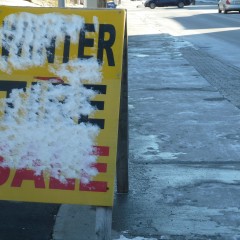Ontario testing needle-free flu vaccine for children
By Thomas Hall and Shannon Lough Ottawa Public Health wrapped up its biggest flu shot campaign ever this weekend but researchers are still looking for a more effective way to prevent the flu in children. Some say the answer is FluMist, a vaccination that is sprayed into your nose and not shot through a needle. The FluMist vaccination has been publicly funded for children by B.C., Alberta, Quebec, PEI, and the three territories. Currently, Public Health Ontario is studying the nasal spray vaccination in schools to determine whether this vaccine is the best option for children between the ages of two and eight. Good news for those scared of needles. “The goal of the flu vaccination campaign is to vaccinate everyone, especially those most at risk for complications from the flu, including children from six months to five years of age, seniors and the chronically ill,” said Dr. Jennifer Pereira of Public Health Ontario. Making vaccines more efficient is critical for success, said Earl Brown, a professor emeritus at the University of Ottawa who specializes in vaccination. Unlike other viruses, the flu changes every year, so people need to get vaccinated annually. But technology is allowing for more effective flu shots, said Brown. And scientists are better able than ever to pinpoint strains of the virus, and predict which strains will hit hardest come flu season. Unfortunately, those who need the flu shot most, seniors and the very young, can be the hardest to vaccinate, said Brown. A few years ago Canada introduced Adjuvant to its vaccines, which acts like a booster making the vaccines more effective for seniors. Public Health Ontario is hoping FluMist can do the same for children. The new vaccine consists of Live Attenuated Influenza Vaccine (LAIV), a weakened influenza virus that has been found to be more effective than the traditional flu shot for children aged two to 17 years, said Pereira. The trick, explained Brown, is that the virus has been weakened so it can’t survive in the lungs. The virus lasts long enough to create antibodies, and then dies. “No one ever died from a runny nose,” joked Brown, but the risk is serious when the flu gets into the lungs. The flu is the most likely respiratory infection to send someone to the hospital, Brown said. And its symptoms, sore muscles, nausea, and fever are not to be taken lightly. Studies on FluMist, the brand name for the LAIV nasal spray vaccine produced by AstraZeneca, have shown positive results, but it has only been approved for Canadians between the ages of two to 59. A pilot study is being conducted at 10...
First taste of winter for Tibetans starting a new life in Ottawa
By Shannon Lough Volunteers held bags full of winter jackets as ten Tibetans arrived in Ottawa airport last Friday night to begin their new lives in Canada. As the newcomers came down the escalator, a group of volunteers were there to welcome and prepare them for the bitter –16 C temperature outside. On a night that felt more like the chill of mid-January than November, people came prepared to equip the new Canadians with winter coats. Tashi Wangdi, the retired home minister of the Tibetan government-in-exile, had garbage bags full of puffy jackets for the newcomers. Tenzin Tsangyang, one of the new arrivals, had traveled for more than 24 hours from New Delhi, India. “I’m exhausted but at the same time very excited,” Tsangyang said. He did some research on the internet to prepare for life and winter in Ottawa. “I heard it’s a very cold place. Other than that I heard that it’s one of the capital cities.” Champa Tenzin, a Tibetan who moved to Canada six months ago, was one of the volunteers handing out jackets. A smiling Tenzin said that Wangdi recruited him to bring the jackets. He said he is excited to experience his first winter. “I haven’t seen a lot of snow and some of my friends are telling me the middle of winter is very cold. I want to experience it,” Tenzin said. The ten newcomers to Ottawa are part of the Tibetan Resettlement Project, a special immigration plan organized by the Canadian government and a volunteer organization. In 2007, there was an agreement between the Dalai Lama and Prime Minister Stephen Harper to bring in 1000 Tibetans from Arunachal Pradesh, a refugee community in Northern India. After years of organization, the process is finally underway. Over the next two years, 90 Tibetans will make their way to Ottawa and this first group will have the opportunity to get settled during Canadian winter. Other Tibetans who were at the airport to welcome the new arrivals reflected on their first Canadian winter. Wangmo Konchok moved to Ottawa two years ago with her mother. She was sponsored to live here by her sister and her sister’s husband, David McDowell. “When they came two years ago it was the absolute mildest winter we ever had and she thought it was cold,” McDowell said. He said he remembers later during that winter his wife and newly arrived sister-in-law “went for a walk and she’s chanting ‘Very cold, going to die.’” He laughs at the memory. In spite of the cold, Konchok has attempted some winter activities since she came to Ottawa. “I tried to learn to skate but...



